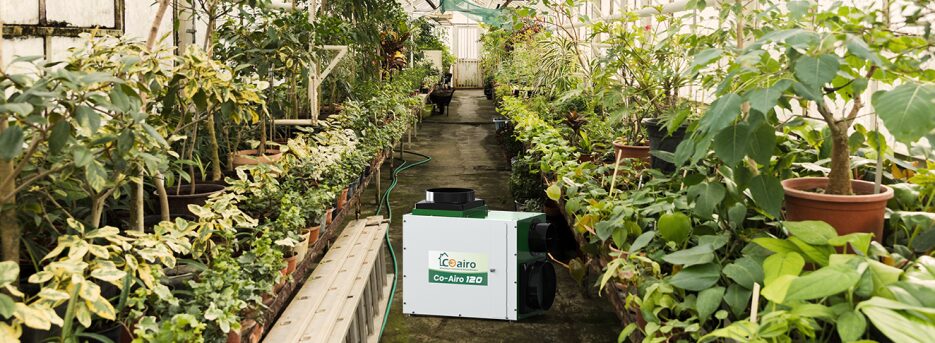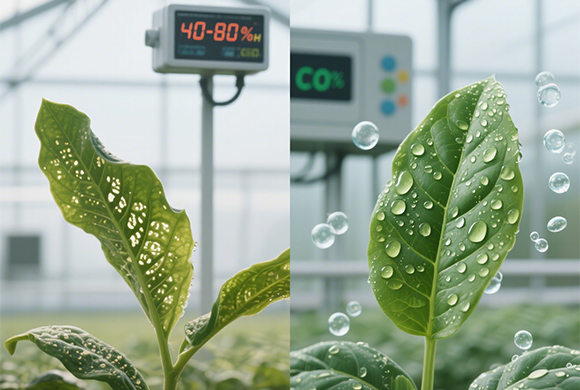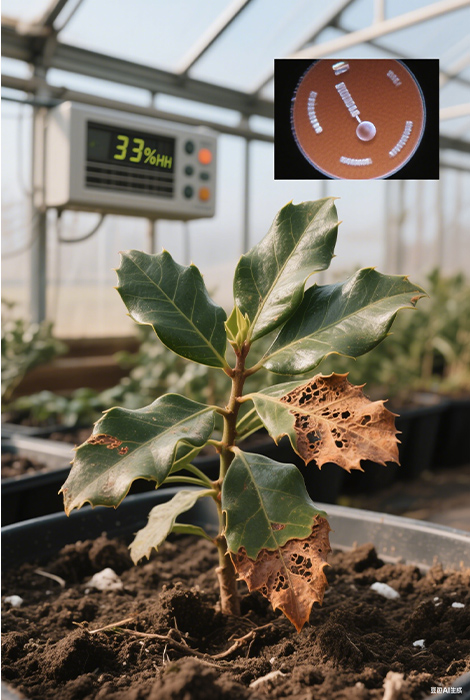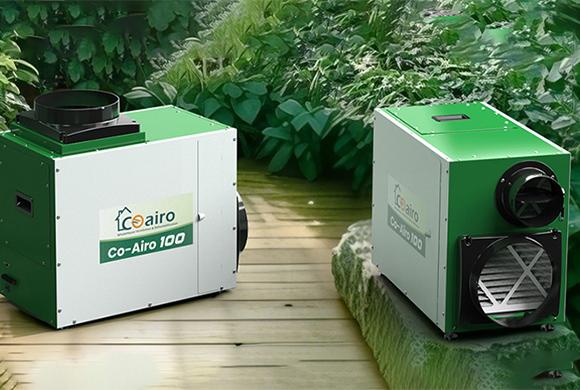
Year Round Humidity Control in Greenhouse Farming: Disease Prevention
Greenhouse farming allows for year round production but it also comes with a hidden challenge in humidity control. A small change in moisture levels can mean the difference between healthy, market ready crops and a season ending disease outbreak. In greenhouses, most moisture comes from the natural evaporation of soil, plants, and irrigation water. While this helps plants grow, it also makes humidity difficult to manage, especially when outside weather changes.
The solution? Reliable, precise humidity control that keeps conditions stable all year round, without chemical treatments. This article explains why humidity matters, the problems caused by seasonal extremes and how Coairo systems can provide simple, chemical free solutions.
Why Humidity Is Important for Crops
Greenhouse crops thrive in an environment where relative humidity is controlled. Most plants perform best at 80% RH but many growers aim for 40-60% to balance disease prevention with optimal growth. This range allows plants to transpire efficiently, cool themselves, absorb nutrients and drive photosynthesis.
Humidity affects crops through their stomata, the tiny pores on leaf surfaces.
- Low humidityforces stomata to partially close, slowing CO₂ intake and photosynthesis.
- High humidityhinders evaporation, reducing transpiration and nutrient transport.
In both extremes, plant metabolism suffers, yields decline and disease risk increases. High moisture levels also create condensation on greenhouse surfaces which reduces light penetration and can drip onto plants, spreading pathogens.


Summer High Humidity: A Disease Breeding Ground
During the hot summer months, natural evaporation accelerates. In enclosed greenhouses, this moisture quickly fills the air. Without removal, RH levels can exceed 85%, the danger zone for diseases like downy mildew.
Downy mildew grows in warm, humid conditions (59-70°F with >85% RH). Spores germinate in under an hour, spreading rapidly from plant to plant. The disease first appears as yellow leaf spots, then gray-purple mold on the underside. Left unmanaged, it can destroy entire crops.
Other summer challenges include:
● Botrytis (gray mold): Develops in condensation prone areas.
● Powdery mildew: Spreads fast in warm, humid conditions.
● Root rot pathogens: Emerge when wet substrates can’t dry between irrigations.
High humidity also reduces plant transpiration, meaning plants can’t cool themselves effectively. The combined stress of heat and disease pressure can wipe out yields if humidity control isn’t prioritized.
Winter Dryness: The Hidden Stress Factor
While summer requires moisture removal, winter has the opposite problem. Greenhouse heating dehydrates the air, dropping RH from time to time to levels that stress plants. Low humidity causes stomata to partially close, reducing CO₂ intake and slowing plant growth.
Dry winter air also:
● Increases transpiration rates beyond what roots can supply.
● Causes leaf tip burn and browning in broadleaf evergreens.
● Disrupts nutrient uptake by reducing water flow in plant tissues.
● Impacts beneficial soil microbes, slowing nutrient cycling.
On windy winter days, plants can lose water quickly, even if the soil has enough moisture. These “winter desiccation” damages leaves and reduces crop quality.
Solutions: Maintaining Year-Round Humidity Balance
The key to successful greenhouse farming is preventing humidity extremes before they become problems. Coairo’s systems offer year round solutions for both summer and winter challenges.
a) Dehumidifiers for High-Humidity Control
Coairo’s specialized greenhouse dehumidifiers remove excess moisture without changing the air temperature too much. This prevents diseases and keeps plants growing steadily.
Application Scenario: In summer when humidity spikes in the morning after irrigation, Coairo dehumidifiers kick in to bring levels back to the target range before disease conditions can develop.
b) Automated Monitoring and Climate Control
Coairo’s equipment contains real-time humidity sensors that automatically adjust the equipment. This prevents sudden shifts in moisture, most commonly the primary source of plant diseases.
Application Scenario: Spring and fall, when the outside humidity is almost the same as within the greenhouse, sensors regulate the ventilation and dehumidification to maintain the conditions equal.
c) Humidification for Dry Winter Conditions
When the air becomes too dry in winter, Coairo offers products such as misting systems and evaporative cooling pads. These add just enough moisture to the air without soaking the plants, keeping leaves dry while roots stay hydrated.
Application Scenario: On a cold, sunny day with heating running Coairo’s humidification system raises humidity to the safe zone, prevents leaf burn and slows water loss.
d) Structural Optimization
Humidity control is most effective when the greenhouse is sealed and insulated. This prevents outside air from disrupting inside conditions so that Coairo’s systems are able to maintain the microclimate constant.
Application Scenario: In windy winter weather, a well sealed greenhouse keeps humidity steady so plants don’t suffer from sudden drops.
5. Why Choose Coairo?
Coairo’s systems stand out for their precision, efficiency and adaptability. They’re designed specifically for the greenhouse environment, offering:
- Wide-range control (1%–99% RH):Maintains optimal conditions year round, regardless of external climate shifts.
- High accuracy: Keeps humidity within ±2% of the setpoint all year round.
- Energy savings are up to 50%:New technology reduces the use of traditional ventilation, which reduces operating costs.
- Automatic operation:Controllers control and regulate conditions without constant monitoring.
- Dual-function performance:High pressure mist systems not only control humidity but also aid in temperature regulation without creating excess wetness.
The result is healthier plants, reduced disease pressure, better quality produce and increased yields, all while saving on energy and labor.

Conclusion
In a greenhouse, agricultural humidity is more than just a comfort factor. It’s a core part of plant health. Summer brings the danger of fungal diseases when humidity soars, while winter can leave plants stressed and under-hydrated. With the right technology like Coairo’s precision systems, greenhouse operators can maintain the perfect balance year round. The result? Stronger plants, better yields and a more sustainable operation. For growers looking to protect their crops and improve efficiency Coairo has a smart long term solution.
Visit www.coairo.com and discover how precision humidity management can transform your greenhouse performance.